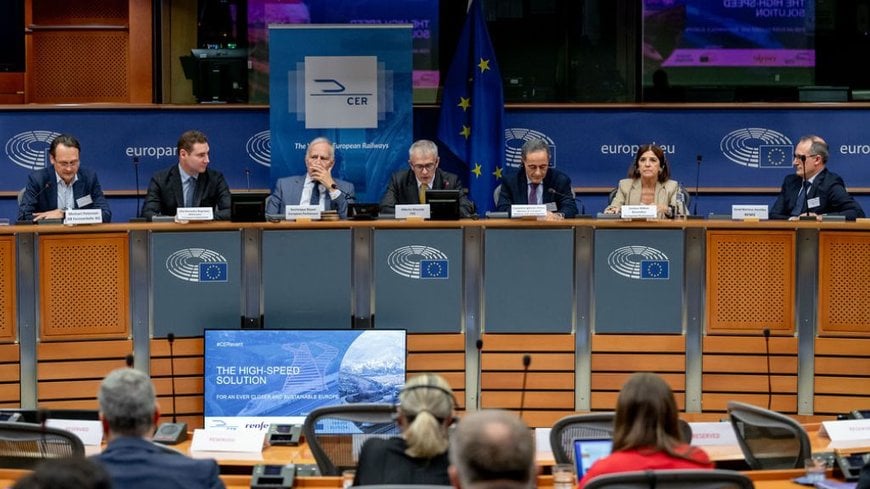railway-international.com
13
'23
Written on Modified on
Rail Sector presents High-Speed Masterplan for Europe & calls for significant extension of current infrastructure
According to the targets set in the EU Smart and Sustainable Mobility Strategy, high-speed rail (HSR) must be doubled by 2030 and tripled by 2050.

The Community of European Railway and Infrastructure Companies (CER) underlines that promoting climate-friendly travel to connect Europe, means promoting the creation of an interoperable high-speed rail network linking European capitals and major cities, joining up urban nodes and airports, and supporting the development of international passenger services. Several studies have been conducted on this topic, most recently by Deutsche Bahn, in cooperation with the major EU railway undertakings, where a vision for the European High-Speed Network of 2050 is clearly outlined.
The proposed EU HSR Master Plan highlights how a broader network will effectively connect all the metropolitan regions in the European Union and enable modal shift to HSR by setting a coherent standard in transport quality all over Europe.
While there are investment gaps to overcome, if implemented, the Metropolitan Network would significantly increase rail demand for distances between 300 and 1,500 km. Rail would become the privileged mode of transport on European long distances by 2050, while private motorised transport would lose significant market share. Therefore, these distance classes would be a highly relevant market for high-speed transport. Air travel remains the preferred mode of transport for journeys over 1,500 km. Car travel remains the second most important alternative in long-range distance classes.
The study was presented by Dr. Michael Peterson, CEO of DB Fernverkehr AG, at a dedicated CER event held in the European Parliament on 8 November, kindly hosted by MEP Dominique Riquet (co-rapporteur on TEN-T) in cooperation with Renfe and the Spanish Presidency of the EU. The policy debate demonstrated a way forward for the achievement of the HSR targets of the EU Smart and Sustainable Mobility Strategy and contributed to the ongoing debate on the TEN-T Regulation, which proposes plans to enable the modal shift towards green mobility.
CER Executive Director Alberto Mazzola said: "CER underlines that current plans under the revision of the TEN-T Regulation do not go far enough and an extensive HSR network connecting all European capitals and major cities should be developed. To complete a Europe-wide HSR network, a significant extension of current infrastructure should be discussed and added to the long-term programme. This is economically feasible and highly beneficial".
The report "Metropolitan Network: A Strong European railway for an ever closer union" can be downloaded from the CER website here.
www.cer.be

